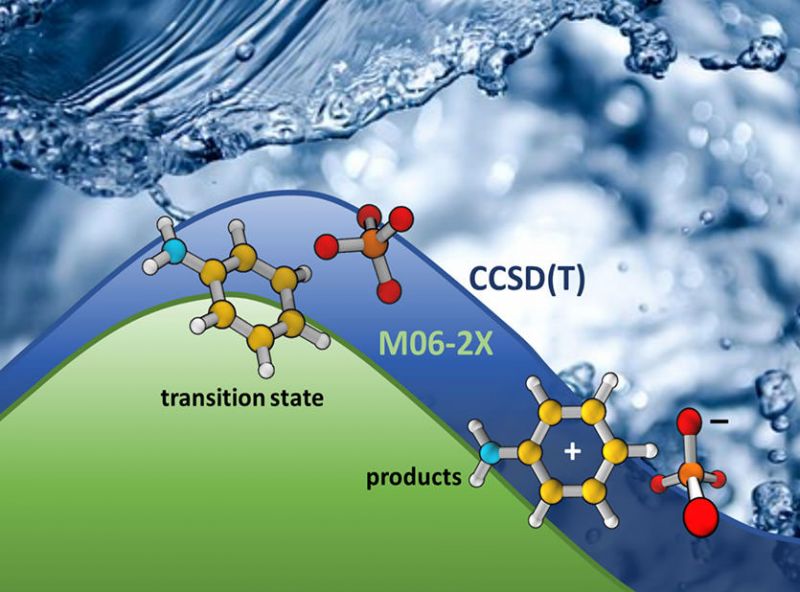How to Best Predict Chemical Reactions of Contaminants in Water
Published on by Water Network Research, Official research team of The Water Network in Academic
Scientists determine the accuracy of computational methods used to study the sulfate radical approach to purifying water.

Image courtesy of authors and Environmental Science: Processes & Impacts (see “Publications”)
Scientists use high-level computational chemistry methods, such as CCSD(T) and M06-2X, to predict reactions involved in purifying water. Researchers compared five computational methods to determine the benefits and limitations of each in studying purification-based reactions. The editors at Environmental Science: Processes & Impacts featured this art in their special issue on computational chemistry. Source: US Department of Energy
The Science
Turning on the faucet and not getting clean water, or any water at all, is a global issue. Cleaning wastewater could help make more water available. In delving into the nuances of wastewater purification, scientists often use computational chemistry approaches. Which is best? Researchers examined five options using 110 reactions associated with a highly reactive sulfate radical breaking apart a contaminant (benzene). They suggest using high-level quantum calculations to spot-check reactions involving the sulfate radical and other inorganic species.
The Impact
Scientists often use computational chemistry methods to predict reactions of major contaminants in water. They want to understand how new water purification methods, such as using sulfate radicals, work. This study helps scientists pick the most accurate method.
Summary
The availability of fresh water is a global issue that’s driving interest in ways to turn wastewater into clean water. Purifying wastewater that contains traces of benzene and other chemicals could make more water available. The challenge is cleaning it. In certain approaches, highly reactive chemicals, called radicals, are used. Scientists are interested in using a highly reactive, highly efficient sulfate radical. It can break down, or oxidize, trace amounts of certain contaminants, but scientists want to know exactly how the sulfate radical works. Computational chemistry provides a predictive path to probe and assess oxidation reactions, but what are the benefits and limitations of each approach? Now, a team analyzed five computational methods, including density functional theory (DFT). They did the analysis with a wide set of reactions (110 in total) that play a key role in sulfate-based oxidation processes. They showed that the DFT methods perform quite accurately for conventional reactions of benzene-based contaminants. However, sulfate radical research benefits from high-level quantum calculations to spot check reactions and ensure that the kinetic and thermodynamic data accurately predict the reactions involving the sulfate radical and other inorganic compounds.
Publications
S. Pari, I. A. Wang, H. Liu, and B.M. Wong, “Sulfate radical oxidation of aromatic contaminants: A detailed assessment of density functional theory and high-level quantum chemical methods.” Environmental Science: Processes & Impacts 19 , 395 (2017). [DOI: 10.1039/c7em00009j]
Source: US Department of Energy
Media
Taxonomy
- Treatment
- Treatment Methods
- Chemical Treatment
- Decontamination
- Filtration
- Decontamination
- Contaminant Removal
- Filtration
- Chemistry
- Biochemistry
- Filtration
- Hydrochemistry
- Chemicals
- water treatment